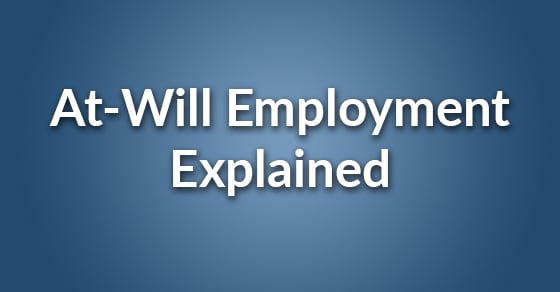
Most employers these days use some form of “at-will” employment model. What is at-will employment? Simply put, it means that the employment relationship can be terminated at any time with or without notice. This goes for both the employer and employee. An employee quitting is pretty straight forward so we’ll focus on the employer side for this article. As this post does not end here, you’re probably assuming it’s not that simple. You’re right.
Common exceptions to this "at-will" employment definition:
Even in an “at-will” model there are certain rights that must be observed and protected.
- It is still illegal to discriminate against employees. So no firing based on age, race, sex, or sexual orientation,
- You can’t fire someone for doing something completely legitimate like filing an appropriate workers’ comp claim, and
- You also can’t unfairly fire someone. An example being: a long term employee that is about to receive an earned financial benefit so that you don’t have to pay it out.
While you don’t have to give any notice to fire an “at-will” employee you do still need to have a good enough reason. It is recommended to speak with your/an employment attorney before letting anyone go.
Progressive Discipline
Even if you think the firing is legitimate it does not mean the employee will agree. They could still file an unlawful termination suit against you. To help minimize that risk you might want to adopt (and keep records of) a progressive disciplinary process. This could include steps like:
- Verbal warning,
- Written warning, and
- Employment termination.
There may be times to skip steps or add more in between, which is up to you and your organization.
Risky business
Hiring can be risky and a proper talent acquisition process is vital to mitigate those risks. That said background checks, progressive interviews, and even trial periods aren’t guaranteed to give you stellar employees every time. Use your best judgment and make sure to keep records!